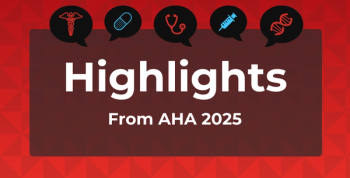
Pilot Suggests Additional Benefits of Entresto in Patients With HFrEF
When the sympathetic nervous system is unregulated, it can lead to high blood pressure and elevated heart rate.
The combination of sacubitril-valsartan, sold as Entresto, that is currently the only FDA-approved for patients across the spectrum of heart failure, may have additional benefits for those with heart failure with reduced ejection fraction (HFrEF), findings of a pilot study show.
Results reported recently in Autonomic Neuroscience examined the effect of the first-in-class angiotensin receptor neprilysin inhibitor (ARNI) on chronic sympathetic nervous system (SNS) overactivity. Sacubitril-valsartan has been shown to cut the risk of death from cardiovascular causes as well as hospitalization from heart failure for those with HFrEF.
When the SNS is unregulated, it can lead to high blood pressure and elevated heart rate. The single-arm, open-label prospective study sought to examine the physiological benefits of sacubitril-valsartan; the pilot looked at how the drug inhibited SNS effects in patients with HFrEF, thus offering additional benefits beyond those already demonstrated in clinical trials.
The pilot study was very small, with just 9 patients who were all stable in either New York Heart Association Class II or Class III. Patients with HFrEF were assessed; their muscle sympathetic nerve activity (MSNA) heart rate, and arterial blood pressure were assessed; their average age was 69 years, with a body mass index (BMI) of 28.6 kg/m2. All were on guideline directed treatment and were later started on sacubitril-valsartan. After 2 months, all measurements were repeated, with the following results:
- Sacubitril-valsartan reduced MSNA burst frequency; patients went from 43 ± 10 bursts/min to 36 ± 10 bursts/min; P = .05.
- Burst incidence also declined, from 68 ± 16 bursts/100 heartbeats to 55 ± 16 bursts/100 heartbeats; P =.02.
- Heart rate and blood pressure were unchanged following treatment; P > .05.
According to the authors, “The preliminary findings provide new evidence regarding the ability of sacubitril-valsartan to rapidly reduce SNS activity in patients with HFrEF, suggesting the presence of a novel sympathoinhibitory effect of this new drug class.”
Reference
Bunsawat K, Ratchford SM, Alpenglow JK, et al. Sympathoinhibitory effect of sacubitril-valsartan in heart failure with reduced ejection fraction: a pilot study. Auton Neurosci. Published online June 24, 2021. doi: 10.1016/j.autneu.2021.102834
Newsletter
Stay ahead of policy, cost, and value—subscribe to AJMC for expert insights at the intersection of clinical care and health economics.







































